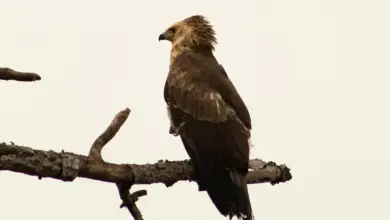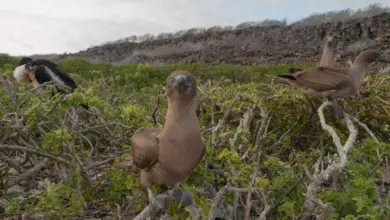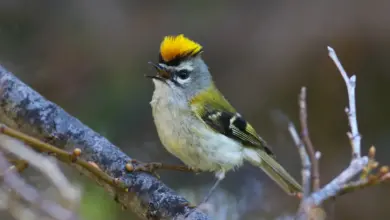Bannerman’s Turacos, aka Touracos De Bannerman, Touracos Doré
The Bannerman’s Turacos, Touraco De Bannerman, Touraco Doré, or Turaco De Bannerman (Tauraco bannermani) is the last turaco species to be discovered in 1923. This turaco is endemic to the humid forests in the mountains of Southwest Cameroon. above 1500 m.
The distribution of Bannerman’s Turacos today, in the Bamenda Highlands of Cameroon, covers only a very small area. The remaining available habitat is at high altitude (1700 to 2950 m), and might be the species’ only protection against continuing deforestation.
The habitat of the Bannerman’s Turaco is estimated to have been reduced by 50% between 1965 and 1985.
The Bannerman’s Turaco has a high profile amongst environmental conservationists, with several organizations campaigning to ensure its survival.
This turaco is monotypic (a genus consisting of only one species), but forms a super-species with the morphologically similar Red-crested Turaco (T.erythrolophus).
Description:
The species measures approximately 40 to 45cm from beak to tail and typically weighs around 200 to 250g.
The plumage transitions from dark green to paler green on the underparts with a diagnostic (within its range) orange crest. In flight, bright crimson wing patches are visible.
Juvenile a duller version of adult.
Call / Song:
Typical kow kow kow of green turacos but higher-pitched and more rapid delivery. Song readily distinguished from Green Turaco T. persa by spacing between the first note and the rest of the song.
Diet / Food:
Fruits are likely to make up most of the Bannerman’s diet.
Miscellaneous Information:
Bannerman’s Turaco plays a significant part in the Kom culture, Turaco feathers are used to decorate chindohs (traditional council members), and bird song is mimicked by the music of the xylophone or Njang. Njang music is played constantly for three days in the village when someone dies.
Touraco / Turaco Information … Turaco Species … Turacos as Pets … Breeding the Turaco





